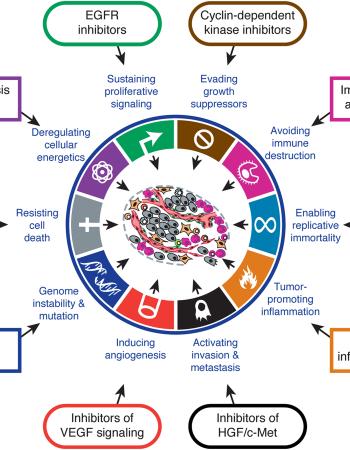Using green biosynthesized kaempferol-coated sliver nanoparticles to inhibit cancer cells growth: an in vitro study using hepatocellular carcinoma (HepG2). Nouf M. Alyami, Hanadi M. Alyami & Rafa Almeer
The ongoing loss of human life owing to various forms of cancer necessitates the development of a more effective/honorable therapeutic approach. Moreover, finding a novel green-synthesized anti-cancer therapy is vital because of the induced drug resistance against the commonly used drugs. Collecting the advantage of the nanometer size of nanoparticles with the biosafety of plant-based substances might potentiate the anticancer effect with minimal toxic effect. In the current study, we aimed to green-synthesize using kaempferol (flavonoid) as a coating the silver nanoparticles (AgNPs) and investigated their anti-cancer activity in hepatocellular carcinoma (HepG2) cell line. First of all, kaempferol-coated AgNPs characters were well-defined using Fourier transmission infrared (FTIR), X-ray diffraction (XRD), zetasizer, and transmission electron microscopy (TEM). The results showed their 200 nm size, spherical shape, less aggregation with high stability characteristics. Then, the cytotoxic effect of both 1/3 and 1/2 LC50 of AgNPs, and doxorubicin (DOX, anticancer drug) on HepG2 cells was evaluated by dimethylthiazolyltetrazolium bromide (MTT) assay and release of lactate dehydrogenase (LDH) leakage percent. Reactive oxygen species (ROS) and apoptotic markers were also analyzed, along with the migration and invasion of HepG2 cells were recorded. Our findings showed that kaempferol-coated AgNPs could induce cytotoxic effects and reduce the viability of HepG2 cells in a concentration-dependent manner. LDH leakage % was significantly increased in cells treated with kaempferol-coated AgNPs confirming their cytotoxic effect. ROS generation and lipid peroxidation could significantly increase in HepG2 cells treated with kaempferol-coated AgNPs along with the exhaustion of antioxidant Glutathione (GSH) marker revealing the induced oxidative damage. Oxidative damage-mediated apoptosis was confirmed by the elevated levels of the pro-apoptotic markers (Bax, Cyt-c, P53, and caspase-3) and the reduced level of anti-apoptotic marker (Bcl-2) using enzyme-linked immunosorbent assay (ELISA). Furthermore, kaempferol-coated AgNPs could suppress the migrating and invading ability of HepG2 cells showing their antimetastatic effect. To end up, kaempferol-coated AgNPs can induce a potential anti-cancer effect in HepG2 cells via oxidative stress-mediated apoptosis.

Pristine and engineered metal nanoparticles are widely applied in various fields of industry, and as consequences, they are useful as well as harmful to human health and environment.

Introduction: Nanoparticles are extensively applied in pharmaceutical, agriculture, food processing industries, and in many other fields. In the current experiment, we have determined the…

The chemoradiotherapy technique is widely applied in the treatment of cancerous disease. Nowadays, nanoparticles are used in drug delivery and it is essential to confirm the nontoxicity of nano-…

